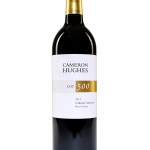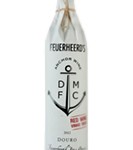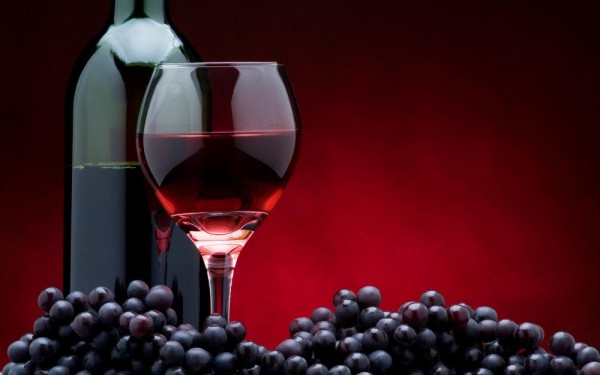Greetings and salutations! Another hump day night finds me, with apologies to the great humor writer Dan Jenkins, doing three of my favorite things: watching sports on TV, drinking wine, and generally not giving a damn. Ah, life is good.
And speaking of wine, for centuries France has been justifiably considered to be the world leader in fine wines. Legendary Cabernet Sauvignon and Merlot blends from Bordeaux, incredible Pinot Noirs and Chardonnays from Burgundy, sparkling wines so great that the entire genre is often (mistakenly) referred to as “Champagne”, to name a few, come from France. Let’s face it, the French aren’t exactly first-round draft choices in world war partners, but they know their wines.
With the success of the California wines, particularly those grown in Napa Valley, in the past three decades or so it is easy to forget that US-based wines were largely overlooked by wine experts in Europe and the rest of the world until 1976. Maybe it’s just me, but that is not THAT long ago! The seminal event that occurred that year was the so-called “Judgment in Paris”, when a Napa Chardonnay (the 1973 Chateau Montelena) and a Napa Cabernet Sauvignon (the 1973 Stag’s Leap Wine Cellars S.L.V.) defeated legendary French competition—and at the shocked hands of expert French judges to boot! Suddenly, the upstart US wine industry was viewed as formidable competition by the wine experts of the world. [As an aside, there is a very entertaining, if not totally historically correct, film entitled “Bottle Shock” that dramatizes the Judgment in Paris—well worth a rental if you haven’t seen it.]
Although many states other than California, such as Oregon, Washington and New York, have experienced some degree of success in the national and even international wine market, very few wine experts recognize the importance of Texas to the wine industry in the US—and, more surprisingly, to the stellar French wine industry. How can this be? How can the modest yet growing Texas wine industry be of any importance to that of France?
If that is your impression as well, then clearly you haven’t heard of the genius of Thomas Munson, who settled in the small burg of Denison, Texas in 1876. Texans would tell you that Munson wasn’t born in Texas, but he got here as fast as he could. Thomas Munson was a botanist and lover of grapes who created a remarkably hardy rootstock that could not only survive the brutal Texas summers but was also resistant to many pests that destroyed most grapevine. One of the most dreaded grapevine pests in the late nineteenth century was phylloxera, a varmint that threatened to destroy the very existence of the French wine industry, particularly in the legendary Bordeaux region. Munson’s expertise in phylloxera-resistant rootstock grown in North Texas vineyards resulted in the transplant of the Texas rootstock into French vineyards that quite literally saved the legendary French wine trade. In fact, the government of France was so grateful to Thomas Munson that in 1888 it awarded him the French Legion of Honor Chevalier du Merite Agricole, an unprecedented honor for an American scientist.
Mr. Munson was an energetic man who was not satisfied with the international acclaim that France bestowed upon him with its prestigious award. Indeed, this Texan went on to publish the agricultural treatise Foundations of American Grape Culture in 1909, which became the fundamental for US grape growers during before Prohibition and since.
In a nutshell, we Americans have no reason to take a back seat to the French in war or, apparently, in wine! Furthermore, it appears that the rest of our nation owes Texas, and particularly Thomas Munson, a huge debt of gratitude for his genius and tireless work on Texas rootstock and all things grape. Think kindly about him next time you pop the cork of a fine Bordeaux wine, y’all.
And now that you know the rest of the story, it’s time for this month’s wine recommendations.
Value Wine No. 1: The Daily Chardonnay.
I understand from friends that there is a belief I have thus far given short shrift to white wines in The Wine Bargain Sleuth. If that is the case, then this is the month I will make amends by offering three great whites worth drinking. Value Wine No. 1 this month is an amazing bargain in the form of the 2010 Bogle Chardonnay. This is an unbeatable value at $10 on a chardonnay that Wine Spectator calls “deceptively complex” and “tight and vibrant”. This wine is blended from the fruit of a number of California vineyards and is widely available. The Bogle Chardonnay has a style contrary to many California heavily oaked and “buttery” chards, instead allowing the natural citrus and melon flavors of the wine to shine. Wine Spectator recently named the 2010 Bogle as a Best Buy Wine of the Week, and laid a very solid 89 rating on this value wine. You can serve this Bogle offering as a weekday white sipper or proudly offer it to your discriminating chard fans on a Saturday night pasta dinner. And you certainly have to love the price! Drink this one now-in fact, go pick up a case. Cheers!
Value Wine No. 2: A Consistent Winner From New Zealand.
My second Value Wine for April is the refreshing Kim Crawford Sauvignon Blanc (2010). Kim Crawford has delivered a remarkably consistent high quality Sav Blanc for nearly a decade, in the process consistently garnering 90+ and high 80 ratings from a variety of reviewers. This beauty is a good choice to pair with seafood and vegetable dishes, but it is an outstanding choice for a summer sipper alone or with light snacks. The 2010 vintage received a strong 89 rating from Wine Spectator, which described this offering as “Fruity and tropical…with great persistence on the finish.” However, my pallet sensed a pleasingly dry finish to offset the tropical fruit nose. Careful shopping for this Kiwi can render a bottle for $15 or so. Like the Bogle chard described above, the Kim Crawford represents a true bargain wine that you will be proud to serve.
Worth a Splurge Wine of the Month: The Winemaker Who Beat the French.
As promised, this month’s Chapter is all about great white wines. This month’s Splurge Wine is the latest installment of a Napa Valley classic which has frequently been considered one of the very best French-style Chardonnays from the Valley: the 2008 Grgich Hills Chardonnay. Grgich Hills was the dream of Miljenko “Mike” Grgich, a native of Croatia who emigrated to the US in 1958 and ultimately became the winemaker at Chateau Montelena in the early 1970’s—just in time for that winery’s shocking victory in the afore-mentioned Judgment in Paris in 1976. If you would like to get a first person narrative of the coming to wine prominence of Napa Valley, click on this link to hear Mike Grgich’s amazing story: http://www.grgich.com/pdf/Paris_tasting_35th.pdf. Based in part on Mike’s remarkable success at Chateau Montelena, he partnered with Austin Hills to start Grgich Hills in 1977 and has been making great wine since. The 2008 Grgich Hills Chardonnay is a wonderful, full-bodied chard that the Connoisseur’s Guide awarded a 91 rating. It is widely available for about $40 per bottle. This nuanced white wine might just change the mind of red wine fans which have had WAY too much bad chardonnay.
Thought for the Day: Wine Is History.
OK, I won’t lie to you. I love the taste of quality wines. I am also quite fond of the funny stories that usually emerge as I share good wine with friends. But as I attempted to point out in today’s Chapter, wine IS history. And I dearly love history! In the case of Napa Valley, one shocking event in Paris in 1976 at the hands of some of the most renowned wine snob judges in France literally changed the way American wines were perceived by the world. In the case of an agricultural genius from North Texas, arguably the most important vineyards in the world were saved from absolute disaster by humble rootstock grown in Texas soil a few miles from the Red River. Folks, you just can’t make this stuff up. Here’s looking at you, Pierre!
© The Wine Bargain Sleuth 2012—All Rights Reserved









Testimonials
Len Musgrove
"Brad, Happy New Year to you, Nicole and the kids! I ..."
Brad Bell
"Thanks Len. I will be checking out a few of your suggestions. Wishing ..."
Vince Papali
"Well done! Eagles still have a chance! See you soon! "